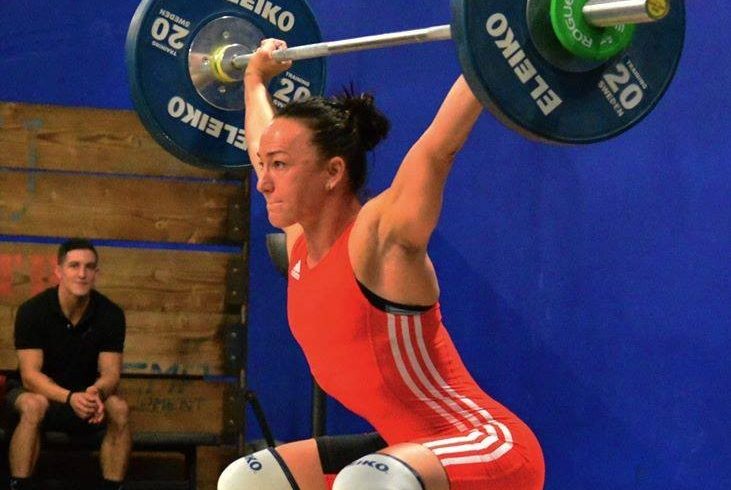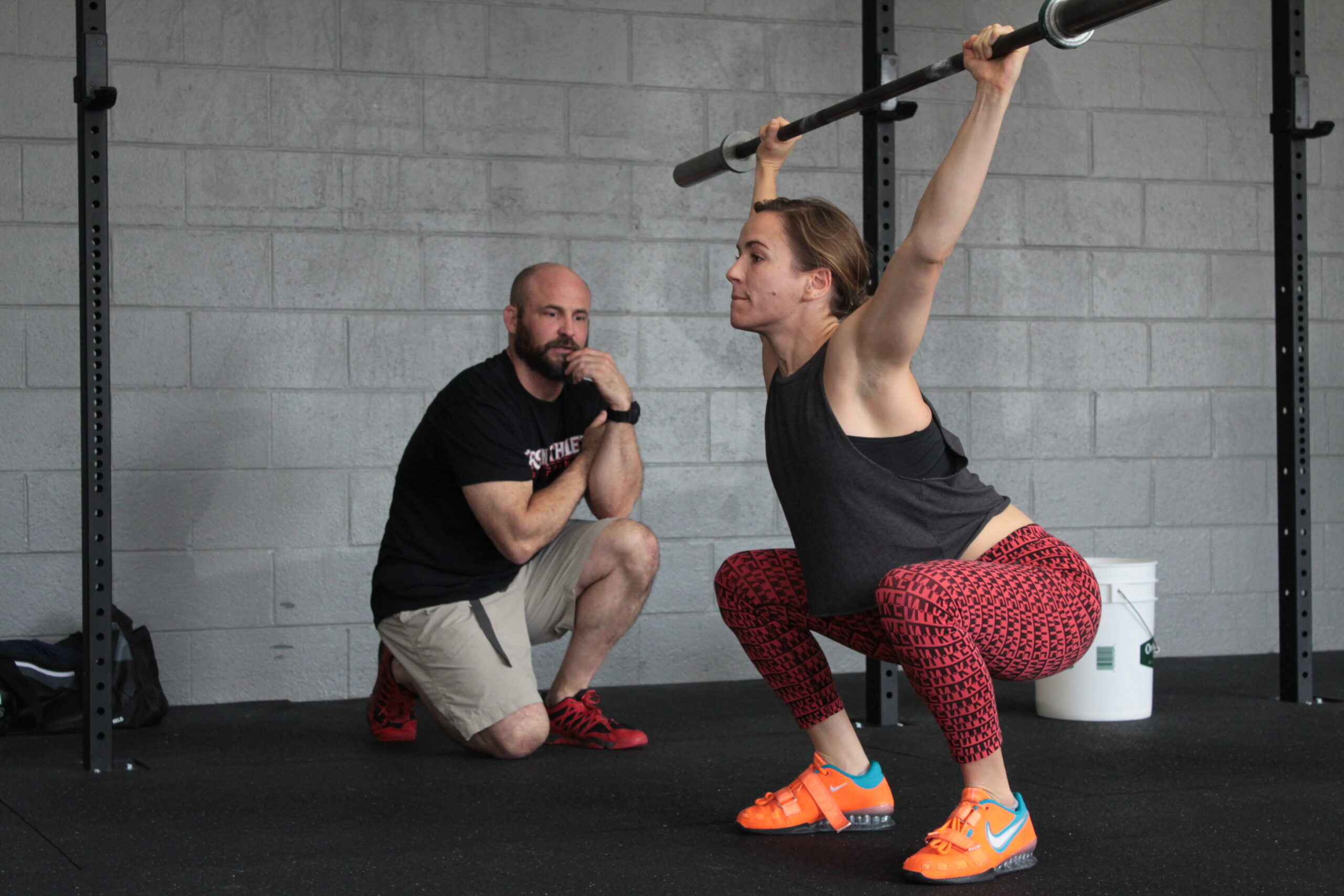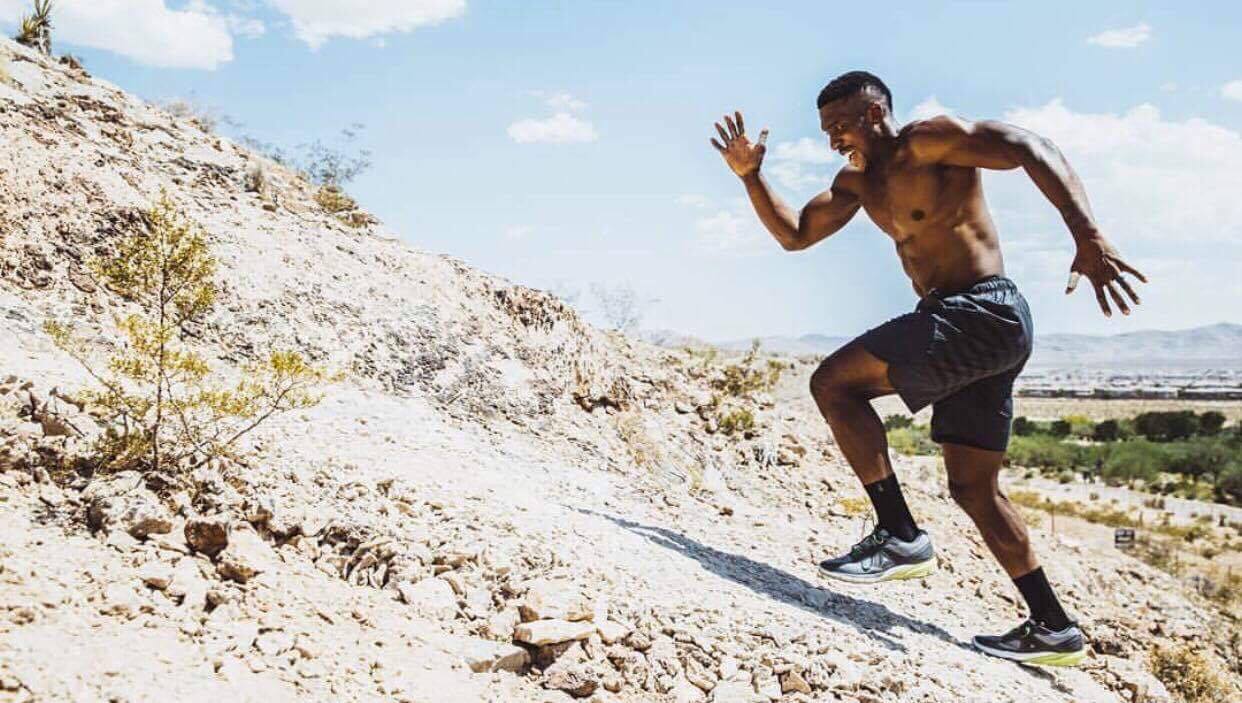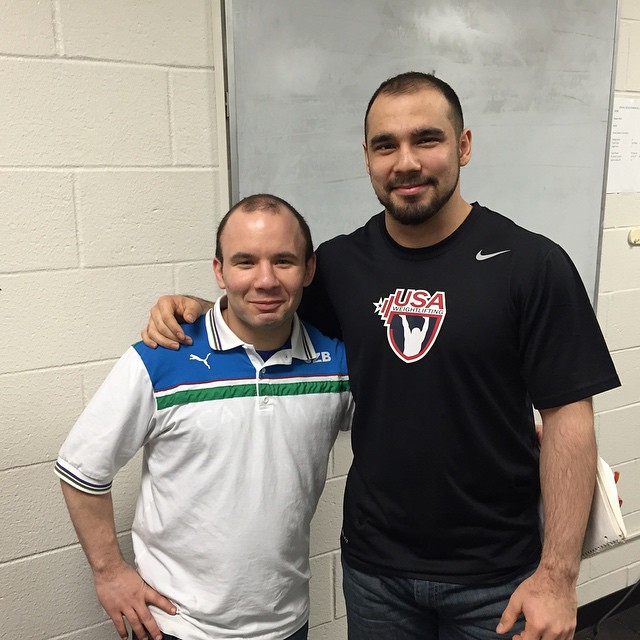“The journey of a thousand miles begins with one step." ~Lao Tzu For the…

Transitioning to Weightlifting as a Masters
This article was written by Marilyn Chychota
A former pro athlete in equestrian show jumping, cycling, and triathlon, Marilyn Chychota discusses her transition to Masters weightlifting and offers advice for others to do the same
A question I’ve been asked fairly often is, “How have you gone from such an extreme endurance athlete to a power, speed, strength athlete?”
Let’s lay out the entire picture first. My family, by genetics, is a fast twitch family, and traditionally very strong. I grew up as a farm kid where lifting things twice my weight was just routine. I was always much more adept at moving heavy stuff than most people around me. Growing up, I did a sport that was skill and strength based: show jumping. I also participated in power-based sports like gymnastics and sprinting. I spent a lot of time in the gym lifting weights, and I build muscle pretty quickly (that’s my body type).
So, initially taking on endurance sports like triathlon and ironman racing was actually WAY out of my norm. Going long was actually the HARD thing for me! I really was not built or set up to be an endurance athlete. Everything about it went against my nature. I got injured a lot; it was mentally difficult for me to go long, and it was hard for me to sustain that body composition.
All that said, I trained myself into a podium long distance athlete, winning races as long as an Ironman. I had a professional career as an endurance athlete for over ten years.
When I retired from racing, I knew I still wanted to be a competitive athlete. As you can imagine, I was now an older athlete who was stiff, slow, and had trained myself to go long for well over a decade. When I finished my endurance career, I had a severely injured hamstring that was chronic, and a no-longer-functioning foot (I had zero toe push off).
So what in my right mind could have made me say, “I know…I want to be an Olympic Weightlifter”? Any coach would have taken one look at this old, stiff, skinny, broken down athlete and said, “Oh dear…I think you might want to find something else.” I’ve never been one to back down from a challenge, and neither should you if someone tells you that it isn’t possible. You can’t go from that long to that fast…you can’t do this. I’ve always had this voice in my head that says… “Watch me!!!”
In the last few years, with Masters weightlifting, Olympic lifting has opened up an entire new set of doors. Typically, unless you were 17 and built 100% for this sport, there was no way you could even think about it. Fortunately, this has changed and I am glad it has. This allows athletes like me and YOU to be able to look at this sport and say, “Yes, I want to try this to!”
How do you do it?
Coming from another sport, I had a good sense of how to make this transition. Let me share a few ideas with you, so if you are wondering whether you can do this, but maybe too afraid to try due to the expectation that this is only for young, fast, strong athletes, you too can give it a shot and maybe find your new love.
It’s been a really fun journey for me to become a complete rookie in a new sport. It is such an exciting time—putting yourself back in an environment where you’re 100% starting over.
1- Get a GOOD coach:
I had never ever even held a PVC pipe. I had no idea of any of the terminology or even what equipment I needed. Find a coach who is willing to take you from absolute scratch and walk you through how to do this. Find someone who is very, very technique-focused and is going to teach you the best technique from scratch.
2- Get flexible:
I literally could not get in a squat when I started. I could not touch my toes. I could not hold an overhead position. Put yourself in the required positions for these lifts –under load (weight), often, and hang out there for a LONG time. DO IT DAILY!!! Even on days I wasn’t going to lift, I’d work on being able to get myself in the positions.
3- Learn about your new sport and be a student 100% for a LONG, LONG TIME!
This is going to take a LONG time. Understand that! Be willing to work with nothing but the pipe, the bar, light weight for as long as it takes to get things right.
4- Work on your weakness outside of the actual lifts.
I had to completely rehab my toe push off and hamstrings back to a point where they could handle the new sport. This required a lot of little at-home exercises.
5- Dedicate yourself to the new motor patterns and cue yourself every single time you move.
I came from the slowest sport in the world to the fastest sport in the world. I understood that I had to remind myself to be fast every at every single movement.
6- Embrace the new sport for all it is.
For me, that meant a new body shape and adjusting to a new style of training (I was used to 30+ hrs a week from a volume sport). Lifting is not a volume sport. I had to adapt to a different diet, a new type of fatigue, and a new culture.
I’m a big believer that you can train your body to do anything! Take the time to learn the sport, dedicate yourself to its demands, and find good people who have been doing it well for a long time. Don’t ever be afraid to try something and if someone says you can’t, keep that little fire in your heart that says…WATCH ME!!
Bio
As a coach, I work with athletes of all levels. In addition to achieving personal goals, my athletes have qualified for world championships, earned multiple age group podiums and overall wins, won several USAT All-American titles, and been named the top-ranked amateur athlete in the world.
Among my professional athletes, I have coached Sara Gross to her IM Brazil win and IM MT win; Maik Twelseik through his consistent top 5 placings; Challenge Wanaka to 2nd place, 11th overall at the World Championships, and the fastest bike split in Hawaii two years in a row. I also coached Jaime Brede through several overall wins and podiums in the Xterra circuit, including a podium at Nationals and the GO Pro Challenge.
I have been involved in elite sports since I was 9 years old, and my resume includes professional competition experience in three different sports: equestrian show jumping, cycling and triathlon.
As a child in Alberta, Canada, I began show jumping and quickly found myself on the international stage jumping at the Grand Prix Level. By the age of 21 I was one of the youngest top show jumping coaches in Canada. I continued my career as a pro and coach with a trained stable of 30 horses and riders competing at a national level.
I became a professional triathlete in 2003, racing to podium positions at Ironman events around the world. I won Ironman Malaysia in 2004.
While racing as a pro triathlete, I was also competing as a professional cyclist. Beginning in 2000, I participated in many national and world level races including the full National Road Circuit, Canadian Road and TT Nationals, the Australian Road and TT Nationals, and the Women’s New Zealand Tour and World Cup. In addition to winning stage races, I won several state championships in both TT and criterium racing.
After retiring from the road I did competitive CrossFit for 2 seasons. I am currently competing as a Masters weightlifter under Matt Foreman and Iron Athlete
I’ve lived, raced and trained throughout the world including New Zealand, Australia, North America, Asia, South America and Europe. My appreciation and interaction with various cultures gives me a unique perspective and comfort level in working with athletes from all over the world.
I also offer coaching with a specialization in mental skills for athletes. I frequently present for educational and motivational talks on mental skills for competition.
I’m currently working as full-time as a triathlon coach with Endurance Corner, which I have been a part of since 2008.
For ten years now, I’ve also been a Head Coach for camps such as Fewoman and Endurance Corner.
I am also a columnist for publications such as Endurance Corner, Active.com, and Triathlete Magazine- Sample articles:
http://www.endurancecorner.com/author/marilyn-chychota/
http://triathlon.competitor.com/2015/06/training/one-hour-workout-treadmill-hills_117307
http://www.active.com/triathlon/articles/how-to-pace-yourself-in-a-triathlon
Other: affiliations and recognitions:
Featured top female coach for professionals http://www.witsup.com/are-female-coaches-breaking-through-the-proverbial-glass-ceiling/
Interviews with podcasts such as WISP and IMTalk
http://chrisstafford.podbean.com/e/wisp-ironwomen/ and
http://www.imtalk.me/home/2014/3/10/imtalk-episode-404-marko-albert-and-marilyn-chychota.html
Iron Athlete Certified Weightlifting coach.- https://www.ironathleteclinics.com/certified-coaches/
Endurance Programming for CrossFit competition teams such as CrossFit Now with Michael Mosley and Chris Burke for the 2014 CF Games
Strength Specialist in programming for Endurance athletes
Programming consulting with teams such as D3 Mulitsport, CrossFit Core competition team, Coach2Compete.
Co Writer for The Best of Endurance Corner Online E – Book-http://www.amazon.com/The-Best-Endurance-Corner-ebook/dp/B008Y6TOAO


